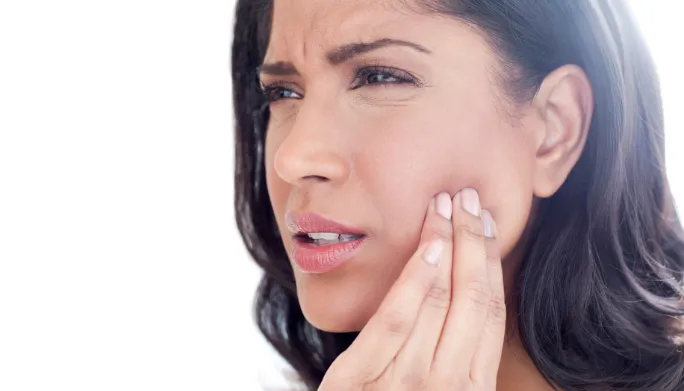Do you feel pain near your ear when you chew, yawn, or talk? TMJ-related ear pain can feel sharp, dull, or like fullness in your ear. This pain comes from the temporomandibular joint (TMJ), the hinge that connects your jaw to your skull. The good news is that with simple, guided exercises, you can ease your discomfort and improve jaw function. At Proactive Health Richmond Physiotherapy Clinic, we guide you through safe, effective TMJ ear pain relief exercises to help you move and feel better.
Understanding TMJ and Ear Pain
The TMJ is located in front of your ears, where your jaw meets your skull. It helps you open and close your mouth, chew, and talk. TMJ dysfunction can lead to:
- Pain around the jaw and ears
- Clicking or popping sounds when moving the jaw
- Limited mouth opening
- Headaches or neck pain
- A feeling of fullness or ringing in the ears (tinnitus)
TMJ issues can happen from teeth grinding, jaw clenching, poor posture, stress, arthritis, or injury. Muscles around your jaw can tighten, leading to pain that radiates to your ear.
Why Exercises Help TMJ Ear Pain
Exercises for TMJ pain can:
- Improve jaw mobility
- Reduce muscle tension
- Improve blood flow to aid healing
- Reduce clicking and pain when moving your jaw
Consistent, gentle practice is key. Do not force your jaw through pain, and focus on slow, controlled movements.
Preparing for TMJ Exercises
Before starting, warm up your jaw:
- Apply a warm compress or heating pad to your jaw and temples for 5–10 minutes.
- Practice relaxed breathing to ease tension before exercises.
Effective TMJ Ear Pain Relief Exercises
These exercises are safe and gentle if performed correctly. Stop if you feel sharp pain.
1. Controlled Jaw Opening
Place your tongue on the roof of your mouth. Slowly open your mouth as far as comfortable without pain, keeping your tongue in place. Close your mouth slowly. Repeat 5–10 times, focusing on smooth movement.
2. Partial Mouth Opening with Resistance
Place two fingers under your chin. Open your mouth slowly while applying gentle resistance with your fingers. Hold for 5 seconds, then slowly close. Repeat 5–10 times.
3. Side-to-Side Jaw Movement
Place an object like a pen (no thicker than 1 cm) between your front teeth. Gently move your jaw side to side. If this is too hard, do it without the object first. Repeat 5–10 times.
4. Chin Tucks
Sit or stand with good posture. Pull your chin straight back, making a “double chin.” Hold for 5 seconds, then relax. Repeat 10 times. This helps align your head and neck, reducing jaw strain.
5. Relaxed Jaw Position
Place your tongue on the roof of your mouth, with teeth apart and lips closed. Breathe through your nose, allowing your jaw to relax. Practice this posture during the day to reduce tension.
Self-Massage for TMJ Ear Pain
Gentle massage can help relax tight muscles around your jaw and reduce ear pain:
- Use your fingertips to massage the muscles in front of your ears and along your jawline using small circular motions.
- Massage your temples and the sides of your neck to ease tension.
- Perform for 1–2 minutes, breathing deeply to help your muscles relax.
Posture and TMJ Pain
Poor posture can increase strain on your jaw and neck, worsening TMJ pain. Focus on:
- Sitting tall with your shoulders relaxed.
- Keeping your ears aligned with your shoulders.
- Avoiding leaning your head forward while using your phone or computer.
Taking breaks to stretch your neck and shoulders during the day can reduce tension contributing to TMJ ear pain.
Other Tips for TMJ Ear Pain Relief
- Avoid chewing gum or hard foods that stress your jaw.
- Cut food into smaller pieces to reduce jaw strain.
- Practice stress management, as clenching often increases during stress.
- Avoid resting your chin on your hand for long periods.
When to Seek Professional Help
Exercises help many people with TMJ-related ear pain, but you should seek care if:
- Your pain persists or worsens
- You have frequent headaches or neck pain
- You cannot open your mouth fully
- You have locking of your jaw
- Your ear pain is severe or affects your hearing
A physiotherapist can assess your jaw, neck, and posture to create a plan tailored to your needs.
How Physiotherapy Can Help Your TMJ Ear Pain
At Proactive Health Richmond Physiotherapy Clinic, we take a holistic approach to TMJ and ear pain relief. Our services include:
- Hands-on therapy to reduce muscle tension in your jaw and neck
- TMJ-specific exercises to improve movement and reduce pain
- Posture training to reduce strain on your jaw
- Stress management strategies to help reduce clenching and tension
- Home exercise programs to continue progress between sessions
Our team helps you understand the cause of your pain, providing practical strategies and support for lasting relief.
Preventing Future TMJ Pain
To reduce your risk of future TMJ pain:
- Maintain good posture while sitting and working.
- Avoid habits like teeth grinding or jaw clenching.
- Use relaxation techniques to manage stress.
- Perform gentle jaw stretches daily.
- Avoid excessive gum chewing.
If you notice signs of tension or pain, early action with exercises and posture changes can prevent pain from worsening.
Why Choose Proactive Health Richmond Physiotherapy Clinic
TMJ-related ear pain can affect your daily comfort, sleep, and ability to enjoy meals. Our physiotherapists at Proactive Health Richmond Physiotherapy Clinic are experienced in treating TMJ disorders. We offer:
- Individualized assessments and treatment plans
- Gentle, effective manual therapy and exercises
- Education to help you manage and prevent pain
- Support to help you return to comfortable, confident movement
We work with you at every step to reduce your pain and improve your quality of life.
Ready to Ease Your TMJ Ear Pain?
You do not have to live with ongoing ear and jaw pain. With guided care and a personalized plan, you can reduce pain and regain comfort. Let our team at Proactive Health Richmond Physiotherapy Clinic help you get started.
Call us today to book your assessment and begin your journey to pain-free movement.



